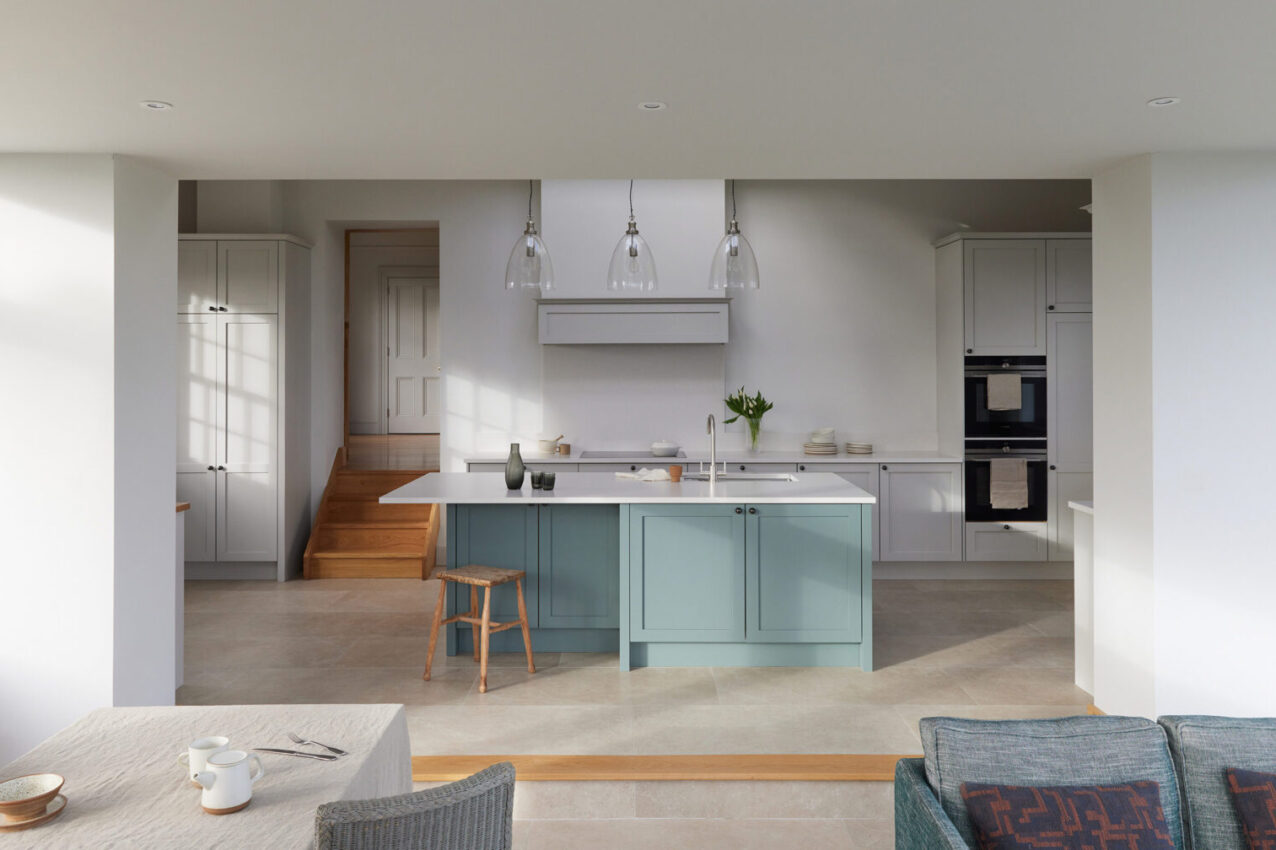How To Bring Your Kitchen To Life with the Right Lighting

Lighting can make or break the atmosphere in any room, but it is particularly important in the kitchen. The kitchen is the heart of the home, so it is vital that lighting is not only functional but also adds depth and warmth to the space.
The right lighting can completely transform a kitchen and is a key consideration when we design and build bespoke kitchens for our clients.
In this blog post, we will discuss the importance of considering lighting when designing a kitchen, explore the different types of bulbs available in the UK and offer our top tips for bringing your kitchen to life with the right lighting.
Design Considerations
Before we dive into the different types of bulbs available, it’s important to understand the design considerations for kitchen lighting.
An important factor is creating layers of light, which will provide a warm and inviting ambiance while also ensuring functionality. Here are four layers of light that may be considered when incorporating lighting into a kitchen.
- Ambient lighting – This is the general lighting that provides an overall illumination of the space.
- Task lighting – This is the lighting that is used to illuminate specific areas where tasks are performed. Examples include under-cabinet lighting, pendant lights over a kitchen island, or recessed lights over the stove.
- Accent lighting – This is used to highlight specific areas or objects, such as a piece of artwork or a decorative backsplash.
- Decorative lighting – This is used to add a decorative touch to the space, such as a chandelier or a pendant light with a unique design.
By including these different layers of light, the kitchen can be made to feel warm and inviting whilst also making it a practical space.
Types of Bulbs Available in the UK
Now that we’ve covered the design considerations, let’s explore the different types of bulbs available in the UK. Here are some of the most common types of bulbs used in kitchen lighting and their benefits and drawbacks.
- LED – LED bulbs are a popular choice for kitchen lighting as they are energy-efficient, long-lasting, and come in a range of colours and styles. They are also cool to the touch, which makes them ideal for use in under-cabinet lighting. However, some people find LED light harsh and clinical.
- Halogen – Halogen bulbs were a historically popular choice for kitchen lighting as they are bright and produce a crisp, white light. However, they are not as energy efficient as LED bulbs and are being phased out across the UK.
- Incandescent – Incandescent bulbs are the traditional type of bulb and are still used in some kitchens. They produce a warm, yellow light, which is often desirable aesthetically. Incandescent lights are not energy-efficient and have been phased out of production, however, it is possible to purchase incandescent-style LED lights.
- Fluorescent – Fluorescent bulbs are energy-efficient and produce a bright, white light. Fluorescent light is harsh and therefore, is often favoured in commercial rather than residential kitchens.
When choosing the right bulb for your kitchen, it’s important to consider both the functional and aesthetic aspects of the bulb. LED bulbs are often the most popular choice for kitchen lighting as they are energy-efficient, long-lasting, and come in a range of styles and colours. However, if you prefer a warmer, yellow light, incandescent style bulbs may be a better choice for you.

Tips for Creating the Perfect Lighting Scheme
Once you have selected your bulbs and lighting style, the next important step is creating the right lighting scheme. Here are some additional tips for ensuring your lighting scheme brings the space to life.
- Dimmer Switches – Dimmer switches allow you to adjust the brightness of your lights and create a more relaxed atmosphere in the kitchen.
- Under Cabinet Lighting – Under-cabinet lighting is a great way to illuminate your countertops and provide task lighting for food preparation.
- Pendant Lights – Pendant lights can add a decorative touch to your kitchen whilst also being functional.
- Natural Light – Don’t forget about natural light. Make the most of it by keeping the windows unobstructed.
- Colour Temperature – Different bulbs have different colour temperatures, which can affect the ambiance of your kitchen. A warmer, yellow light can create a cosy and inviting atmosphere, while a cooler, white light can make the space feel more clinical.
- Multiple Sources – Incorporating multiple light sources, such as ceiling lights, under-cabinet lighting, and pendant lights, can create a layered and dynamic lighting scheme.
Your Dream Kitchens from Bath Kitchen Company
Bringing your kitchen to life with the right lighting is essential for creating a warm and inviting atmosphere while also ensuring that the space is functional and practical to work in.
If you’re looking to create a bespoke kitchen that is tailored to your unique needs and preferences, get in touch with us today. We consider all aspects of kitchen design, including lighting and can recommend bulbs, fixtures and placements to create a functional and beautiful space.
If you are ready to discuss your ideas with us or want to find out more about how we work, give us a call today on 01225 312003 or request a brochure to explore the diverse range of bespoke kitchens we create.

Get in touch
We would love to talk to you about your kitchen in order to create something that is ‘you’. Our kitchen brochure will help you to plan your bespoke kitchen.

